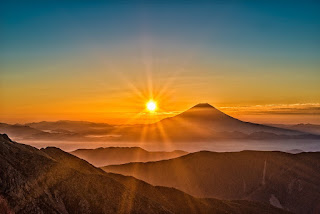Reading Notes: The Ramayana part B
For this reading, we continued with The Ramayana by R.K. Narayan. I really enjoyed the vivid description of the hut Lakshmana built. Natural imagery created this sort of calm oasis, which made Rama's leaving it all the more impactful. Mud, bamboo, leaves, wood, and beautiful colored earth decorations made this small hut in Rama's exile vivid and alive (p. 65). Similar descriptions were used again when their new forest home in Panchvati was described. Again, the description of the building materials let the reader get the main feel of the home and the aesthetic. But the description could go deeper, adding texture words like grainy or smooth (to describe the hut walls for instance). Also, the home is emphasized as a shelter said to provide protection for Rama and Sita. This could be better visualized with a contrast of settings between the harsh sun and the shade.
When Ravana orders back the daylight and the sun, the description of setting upon its return was very good. The author amped up the visualization by adding the exposure of deeds that usually occur during the night to the basic visualizations of dark to light (p. 81). They used habitual, traditional actions as a visualization of the confused setting in the daylight. In fact, actions are used so exclusively to describe the transition into day and the confusion it caused that I would actually add more visual descriptions of how the earth changed upon this transition. The reflection of the sun on the water and cool soil becoming hot. I would add these types of descriptions to make the change more feel more drastic.
When Ravana orders back the daylight and the sun, the description of setting upon its return was very good. The author amped up the visualization by adding the exposure of deeds that usually occur during the night to the basic visualizations of dark to light (p. 81). They used habitual, traditional actions as a visualization of the confused setting in the daylight. In fact, actions are used so exclusively to describe the transition into day and the confusion it caused that I would actually add more visual descriptions of how the earth changed upon this transition. The reflection of the sun on the water and cool soil becoming hot. I would add these types of descriptions to make the change more feel more drastic.
Mt. Fuji by Kanenori on Pixabay



Comments
Post a Comment